Barn Quilt History: The Exciting Story Of Barn Quilt Trail
Imagine driving through the rural countryside and across numerous farmhouses, your eyes catching glimpses of vibrant, patterned squares adorning the sides of old barns.
These are barn quilts – not cloth, but rather painted quilt squares on wooden frames. Barn Quilt history is fascinating.
The history of barn quilts is a tapestry woven from the threads of both quilting and rural American heritage. Like stitches in fabric, each barn quilt carries with it stories from a unique cultural and familial legacy.
Tracing back a couple of decades to the early 2000s, the barn quilt movement began its resurgence.
Donna Sue Groves of Adams County, Ohio, wanted to honor her mother’s quilting artistry by hanging a wooden quilt block on her barn.
Little did she know, this personal tribute would ignite a new tradition that would rapidly spread across the United States and Canada.
The simple act of hanging a painted quilt pattern on a barn sparked a community-based movement, connecting neighbors, celebrating local history, and promoting rural pride.
As you delve into barn quilt history, you learn that these emblems serve purposes that reach far beyond decorative enhancement.
Furthermore, they are markers of identity, storytelling devices, and symbols of continuity linking past and present.
Each painted square reveals a choice in design that often reflects a family’s heritage, traditional quilt patterns, or significant local symbols. So, when you come across a barn quilt on your journeys, you’re not just seeing a pretty pattern – you’re witnessing a piece of living history.
Barn Quilt History
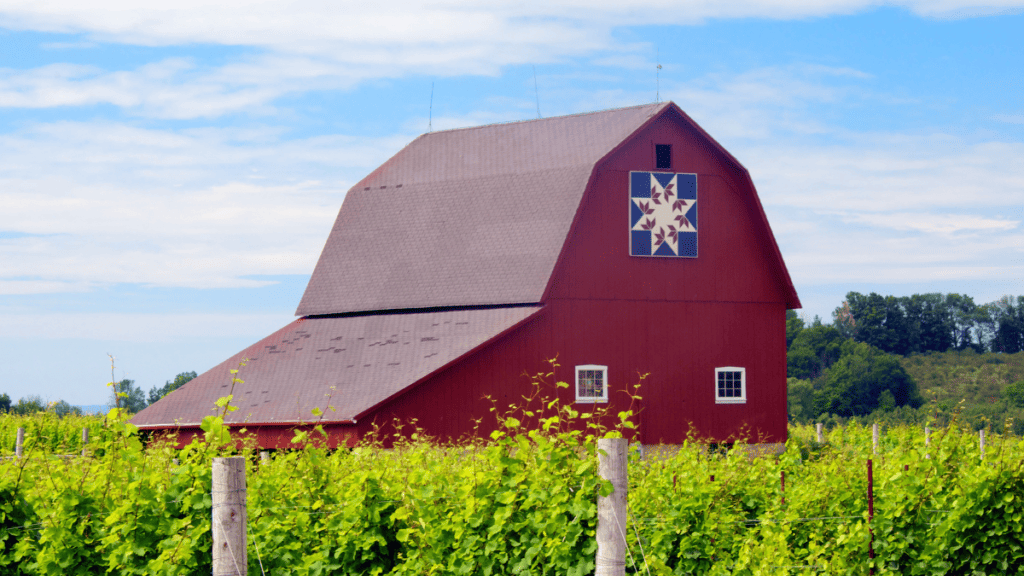
Barn quilts have a rich history that intertwines personal initiative with American heritage. This section unpacks how Donna Sue Groves kickstarted a folk art movement, the deep roots of quilting in America’s past, and the barn quilt’s significance in rural landscapes.
Introduction to Donna Sue Groves and the Humble Beginning
Donna Sue Groves wanted to honor her mother, a noted quilter, by hanging a painted quilt on her barn in Adams County, Ohio.
This idea blossomed in 2001, marking the starting point for barn quilts as a wider community project. It wasn’t just a one-off; Donna’s vision sparked a grassroots movement, drawing together rural communities through a shared appreciation for this new art form.
Influence of Early American History
The barn quilt concept resonates with motifs familiar in early American history. As immigrants flowed into the new world, they brought quilting traditions which represented a mix of cultural heritage and practical necessity.
Bold patterns were often used to signal safe houses along the Underground Railroad. These quilts transcended their material existence, becoming a part of the storytelling fabric that chronicled the nation’s growing pains and triumphs.
The Barn Quilt Idea and Its Connection to Rural America
The quilts on barns serve as modern canvases reflecting an art form integral to rural American identity. In rural areas, far from the buzz of cities, these colorful patches on weathered barns embody a convergence of folk art and communal spirit.
Furthermore, they silently weave the narrative of rural life, celebrating its resilience and history, becoming landmarks in their own right and reinforcing a sense of pride in rural communities.
The Spread of Barn Quilts
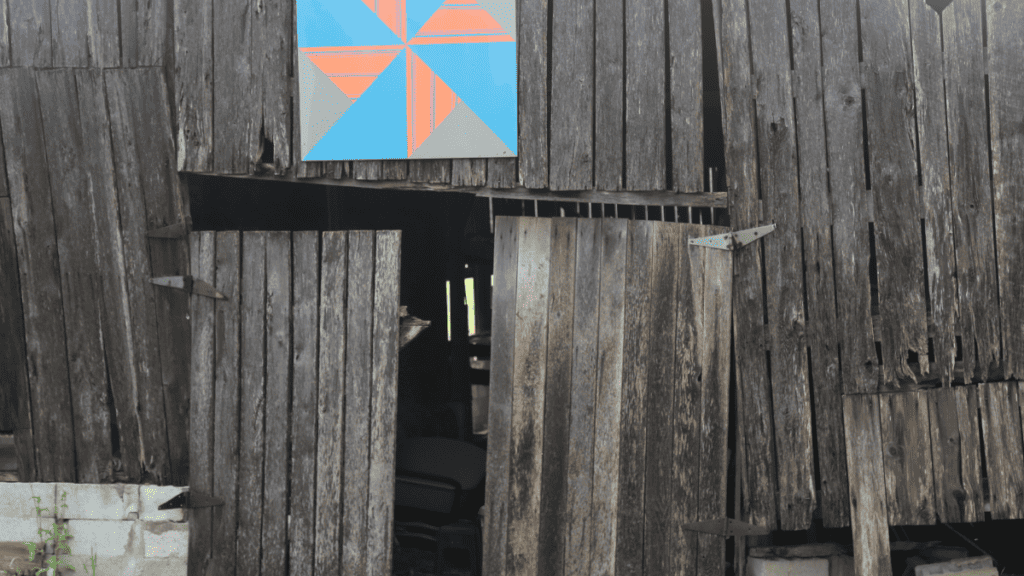
Barn quilts quickly transformed from a private family tradition into a widespread community effort, each painted square telling its own unique story and contributing to the colorful tapestry of rural America.
From Family Tradition to Community Projects
Initially, barn quilt squares were symbols of heritage, hand-painted by individual families to celebrate their history and add a personal touch to their barns. It wasn’t long until these quilt-like blocks caught the attention of neighbors and local artists.
Collectively, they recognized the potential to enhance public art and unite communities through shared projects. The Ohio Arts Council was instrumental in fostering this expansion, funding initiatives that encouraged the display of barn quilts as a form of local pride.
- Funded by: Ohio Arts Council
- Purpose: To promote public art and community unity
- Transformation: From individual family tradition to widespread community projects
Growth Across the United States
The American quilt trail movement gained traction in the early 2000s, stemming from the simple desire to celebrate rural heritage.
As more families and communities engaged in creating barn quilts, the trend pervaded through the Midwestern states, with a notable presence in Ohio, and leapt over to the East Coast, making its mark in New England.
The Canadian provinces also joined in, embracing the colorful display of barn quilts that dotted the countryside.
- Region Spread: Midwestern States, New England, Canadian Provinces
- Origin: Early 2000s
- Purpose: Celebration of rural heritage
Barn Quilt Trails
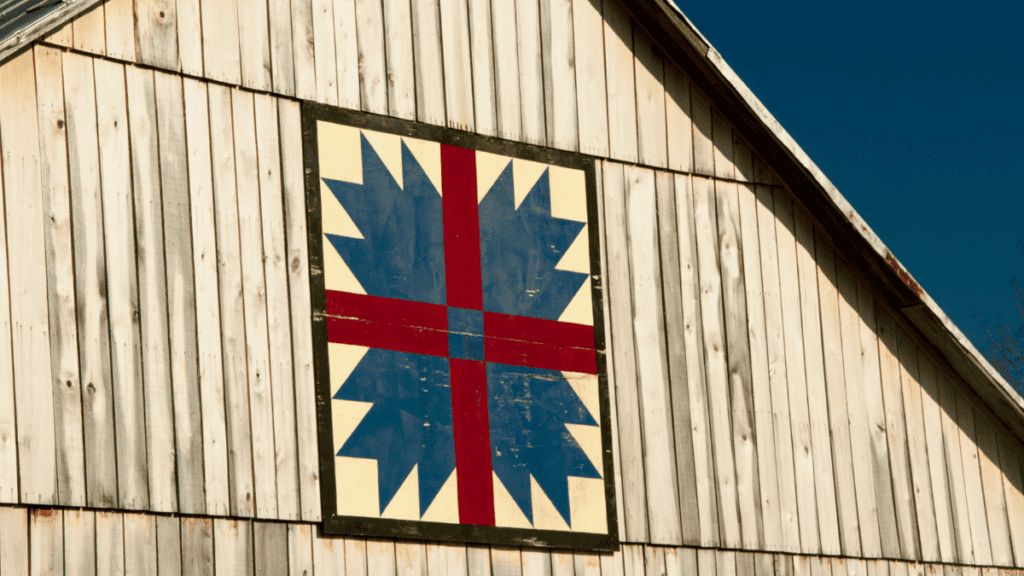
See Barn Quilt Trails to Visit
The concept of barn quilt trails began with Donna Sue Groves of Ohio, who aimed to honor her mother’s quilting art by creating the first barn quilt trail.
This idea captivated many, and before long, these trails interconnected communities, providing an inviting journey through the history and culture reflected in each barn quilt’s design.
The trails served not only as a tourist attraction but also as a testament to the collaborative spirit of the regions they adorned.
- Inception: Donna Sue Groves of Ohio
- First Trail: Ohio
- Significance: Cultural journey, community collaboration, tourism boost
By planting quilt squares on the sides of barns, your local history is on display, inspiring community members and visitors alike to appreciate the tradition and artistry of barn quilts.
Cultural and Economic Impact
Barn quilts have become more than just rural decorations; they tie into community well-being and local economies. As you dive into their impact, you’ll see how they stitch together cultural pride and economic vitality.
Community Engagement and Revitalization
In small towns across America, barn quilts are icons of unity. Local groups usually come together to create these artworks, which often leads to community bonding and a strengthened sense of place.
For instance, Shawano County, Wisconsin, sparked a rural renaissance through its barn quilt project, with over 300 quilts transforming local barns into a vast outdoor gallery.
These community projects often lead to spruced-up farmsteads and renewed local pride, which can attract new businesses and contribute to economic development. The revitalization isn’t just aesthetic; it’s a reinvestment in the community’s future.
Tourism and the Love of Road Trips
The allure of scenic drives to spot barn quilts can translate directly into tourism dollars for rural areas. Scenic drives encourage visitors to explore off-the-beaten-path areas, often stimulating economic development. Take a drive down the country roads in Iowa or Kentucky, and you’re likely to find a quilt trail that invites you to meander through the countryside.
Here’s how barn quilts enhance regional tourism:
- Encourage road trips and scenic excursions
- Spark interest in regional history and local charm
- Draw visitors to rural and often overlooked areas
Data from various rural towns suggest that barn quilt tourists often stop to dine at local eateries, stay in local lodgings, and purchase local goods. This influx of visitors translates to a steady stream of income that benefits small-town economies.
Supporting Local Businesses and Artisans
Artists and crafters in the community are central to creating barn quilts. These local artisans get a platform to showcase their work, which can result in commissions and sales that bolster their income. Furthermore, adjacent businesses like cafes, gift shops, and bed-and-breakfasts benefit from the increased foot traffic.
For instance:
- In Ohio’s Amish country, barn quilts enhance local shops’ appeal.
- Farmers markets often see increased patronage as travelers visit to see the quilts, then shop for local produce.
By integrating art, history, and commerce, barn quilts act as a unique catalyst for sustaining and revitalizing local businesses. They’re not just about celebrating rural heritage; they’re about creating a vibrant future for small towns.
Barn Quilt Patterns
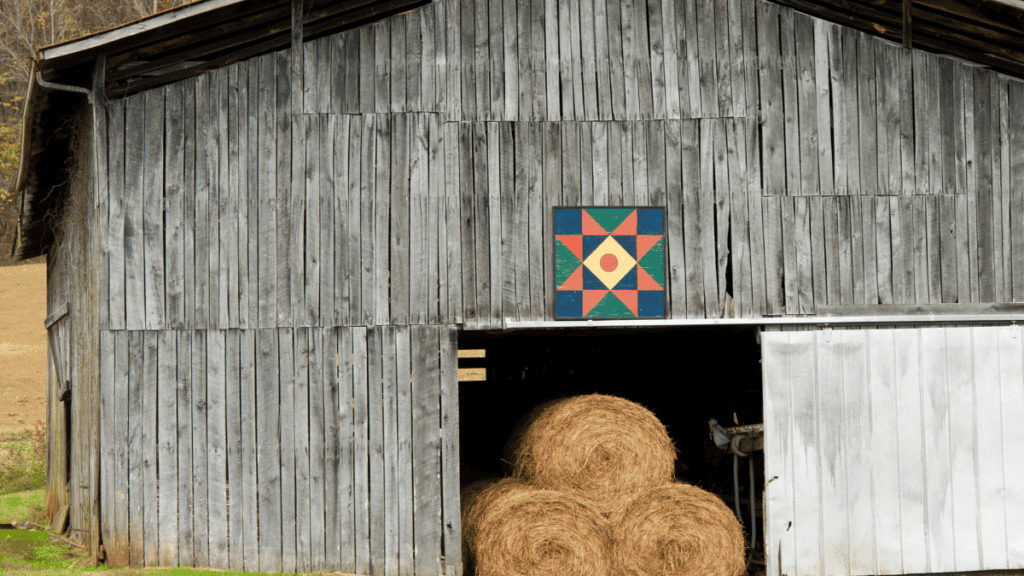
Download Barn Quilt Patterns
Barn quilts combine the comfort of hand-stitched heritage with the bold statement of large-scale art. You’ll find them adding a pop of color to old barns, each telling a unique story through its design.
Significance of Quilt Block Patterns
Quilt block patterns aren’t just decoration; they’re steeped in history and symbolism. Take the Ohio Star, for example, a traditional pattern featuring a center four-point star surrounded by triangles. Or the Compass Star, guiding the way like a north star for travelers. These patterns on the side of a barn symbolize guidance, tradition, and sometimes family heritage.
Artistic Expression and Regional Heritage
As you explore various regions, you’ll notice the painted quilt designs reflect local culture. A red barn might sport an intricate quilt block pattern that’s been passed down for generations, serving as a signature of the region.
- Northeast: Expect to see simple geometric shapes.
- Midwest: Look out for patterns that tell stories of the agricultural lifestyle.
Each region’s barn quilt is a painted canvas reflecting the unity and pride of the community.
Materials and Techniques
When creating these wooden quilt blocks, artisans often use exterior latex paints for their durability and vivid colors. These geometric designs might seem like they’re simple to create, but there’s a technique to ensure they can withstand the test of time against weather and sunlight.
Steps to make a barn quilt:
- Select a distinctive quilt pattern.
- Outline the design on a wooden block.
- Fill in the pattern using bold colors for contrast.
Whether displayed on an old barn or a newer structure, these patterns offer a timeless nod to America’s quilting past.
Fabric Giveaway
Enter our monthly fabric giveaway. Simply complete the tasks daily and you will be entered into the drawing. Winner will be randomly drawn on the first day of the month and notified via email


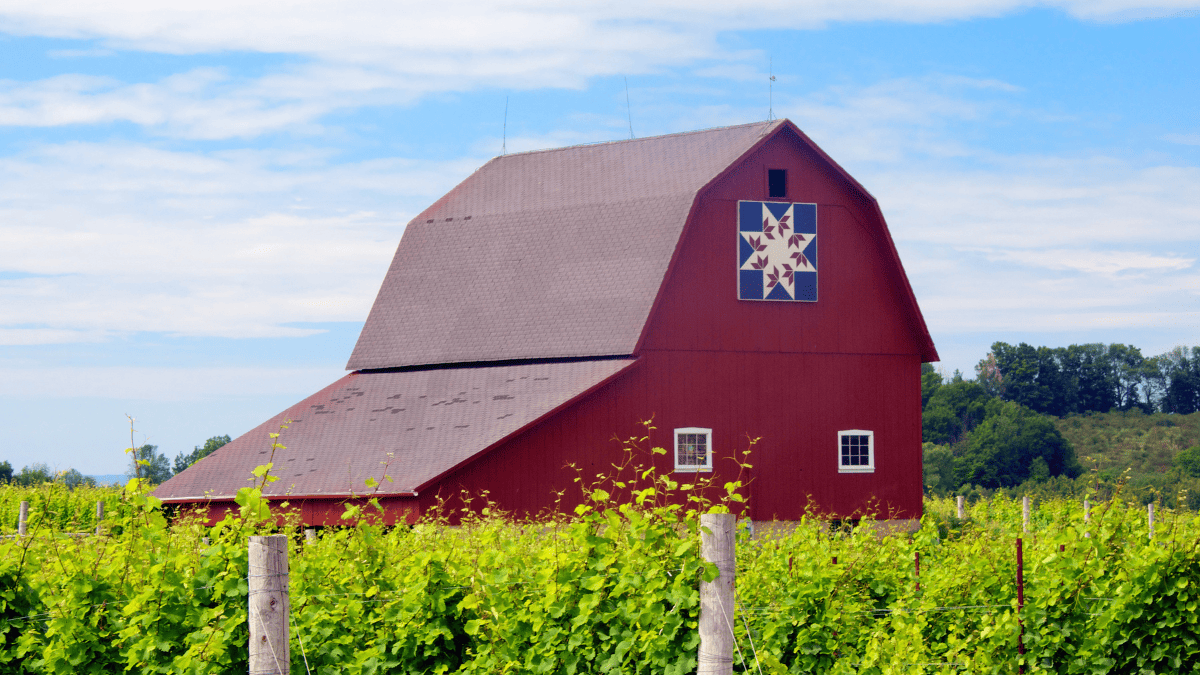
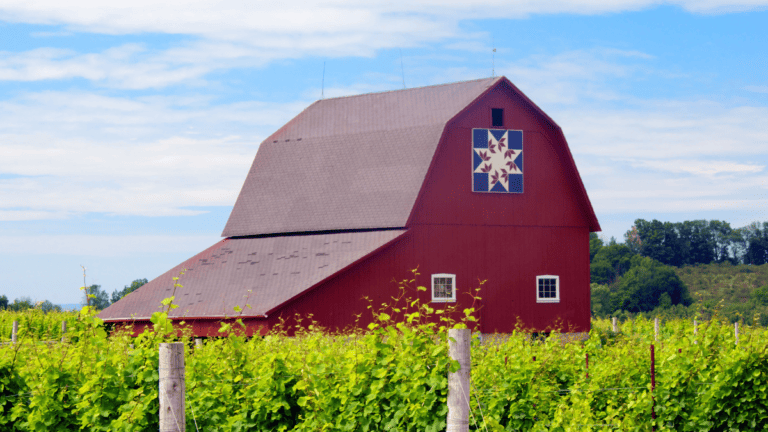
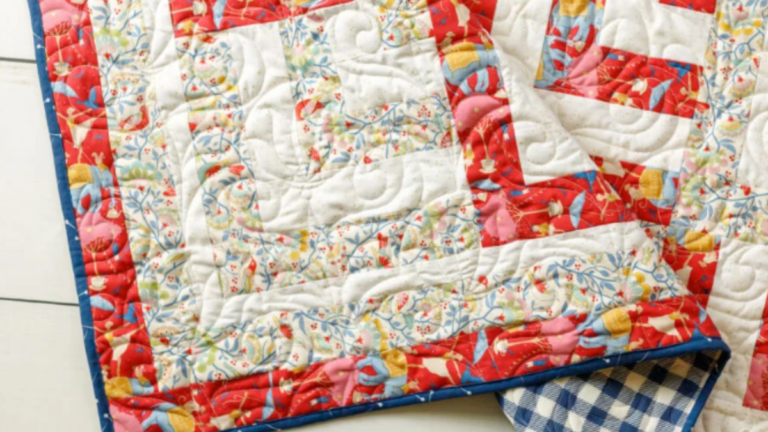
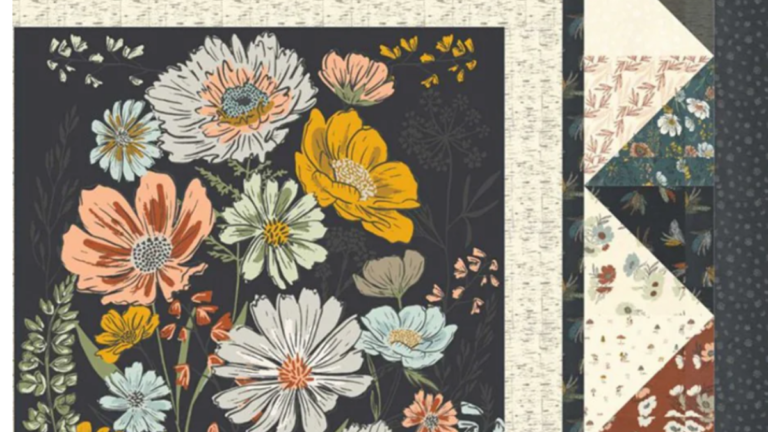
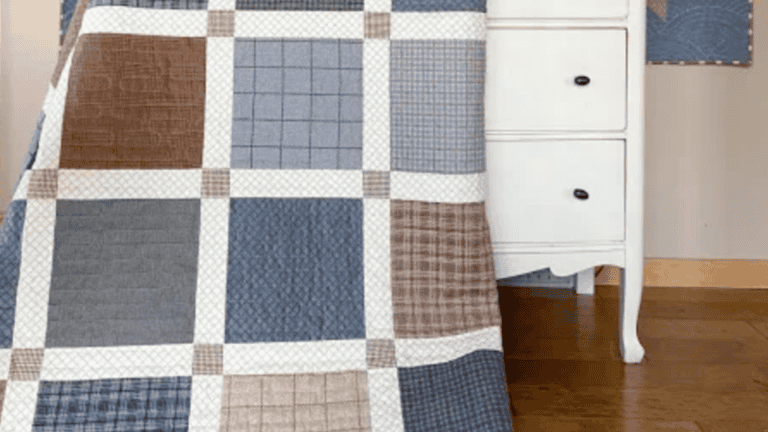
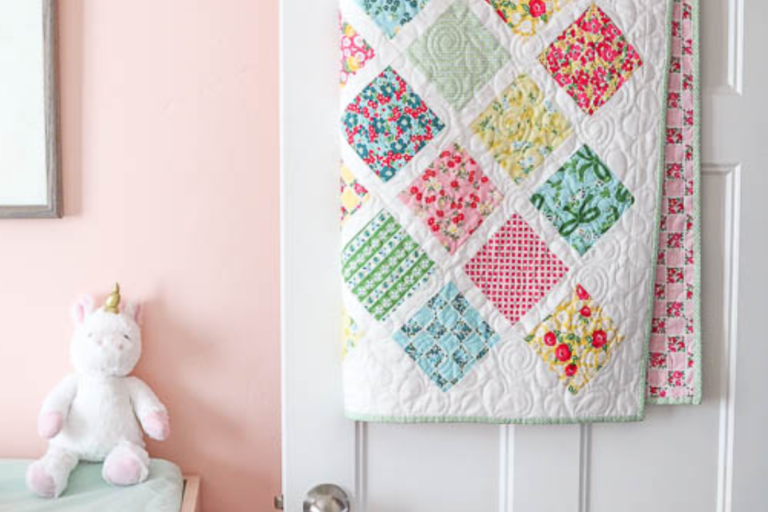
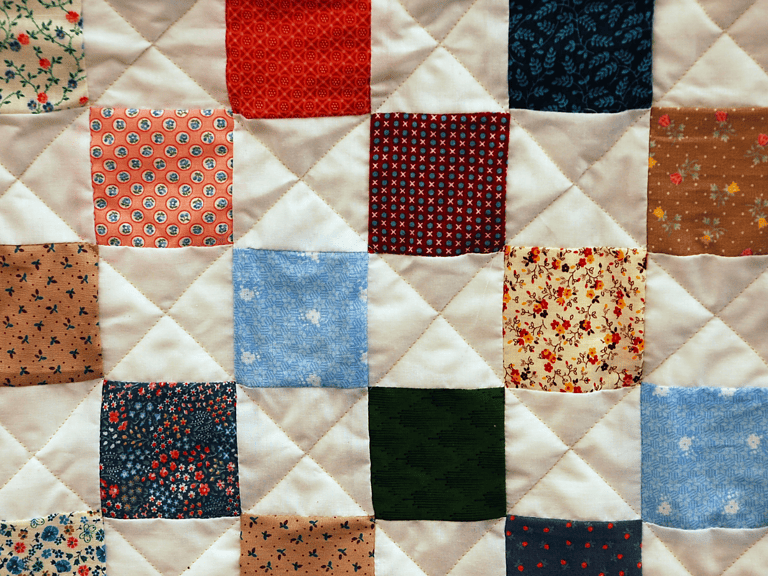
4 Comments